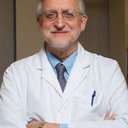Anti-inflammatory actions of flavonoids and structural requirements for new design.
Nøgleord
Abstrakt
Flavonoids are low molecular weight compounds rich in seeds, citrus fruits, olive oil, tea and red wine, with potent antioxidant, cytoprotective and antiinflammatory activities. Flavonoids are composed of a three-ring structure (A,B and C) with various substitutions; they can be subdivided according to the presence of an oxy group at position 4, a double bond between carbon atoms 2 and 3 or a hydroxyl group in position 3 of the C (middle) ring. Particular hydroxylation patterns of the B ring of the flavones permit them to inhibit histamine, tryptase, interleukin-6 and interleukin-8 release from human umbilical-cord derived cultured mast cells, as well as from macrophages. The catechol (o-dihydroxy) group in the B ring as in quercetin confers potent inhibitory ability, while a pyrogallol (trihydroxy) group, as in myricetin, produces even higher activity. However, addition of one hydroxyl group on position 2′ of the B ring, as in the flavonol morin, renders this compound inactive. The C2-C3 double bond of the C ring appears to increase scavenger activity because it confers stability to the phenoxy-radicals produced, while the 4-oxo (keto double bond at position 4 of the C ring) increases free radical scavenger activity by delocalizing electrons from the B ring. The 3-OH group on the C ring appears tobe critical for anti-inflammatory activity. Inhibition of mast cell secretion was shown to be mediated by a 78-kD phosphoprotein which has been cloned and serves as a bridge between the cell surface and the cytoskeleton. Phosphorylation at particular sites in the C-terminus unfolds the three dimensional structure of this protein making actin binding sites accessible; crosslinking with actin in the cytoskeleton prevents secretion of inflammatory mediators. These properties present unique opportunities for the synthesis of new compounds for the treatment of inflammatory and possibly proliferative disorders.


